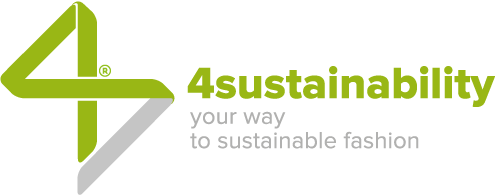On February 20, the EU Council definitively approved new rules against Greenwashing. After publication in the Official Gazette, member states will have 24 months to implement them. In March, the sister Directive on Green Claims is also expected to be voted on.
Following the vote on January 17 by the European Parliament, the EU Council gave final approval for the publication in the Gazette of the Empowering Consumers for the Green Transition Directive. Its aim is to prohibit the use of misleading environmental statements, improve product labeling, and make warranty information more visible.
Under the measure – which amends the directive on unfair commercial practices (UCPD) and the directive on consumer rights (CRD), adapting them to the green transition and the principles of the circular economy – a series of questionable behaviors related to fake environmentalism and so-called premature obsolescence of goods will become more difficult, with the effect of protecting consumers and enabling them to play a more active role in the green transition.
Directive Greenwashing: Putting an End to Generic Environmental Claims
The new rules aim to make product labeling clearer and more reliable by prohibiting the use of generic claims such as “eco-friendly,” “natural,” “biodegradable,” “climate-neutral,” or “eco” without supporting documents and certifications demonstrating their accuracy and validity.
The directive on Greenwashing is closely related to another proposal by the European Commission currently under review by EU institutions: the Green Claim directive, which will define more specifically criteria and conditions for their proper use.
The use of sustainability labels will also be regulated from now on. We add “finally,” considering the chaos caused by their proliferation in the absence of useful data for any comparison. In the European Union, only sustainability labels based on official certification systems created or approved by public authorities will be allowed in the future, and this is a truly significant development.
Another new element is the prohibition of claiming that a product has a neutral, reduced, or positive impact on the environment if these results depend on the use of emission offsetting systems. An example among many? Airlines will no longer be able to sell “climate-neutral” flights and encourage consumers to offset emissions by paying more.
The new rules will prohibit unfounded claims about the lifespan of products: it will not be possible, for instance, to claim that a washing machine will last for 5,000 wash cycles if this is not true under normal conditions. It will also be forbidden to encourage the replacement of consumables before necessary (e.g., printer ink) or to present products as repairable when they are not.
Furthermore, warranty information will have to be more visible, and a new harmonized label will be created to give greater prominence to products with an extended warranty period.
The Stakeholders’ Perspective
Regarding the durability and repairability of products, activists from the European Environmental Bureau (EEB) have spoken out, applauding the directive as a measure to combat greenwashing but accusing the EU of not being sufficiently proactive on the issue of planned obsolescence, the commercial practice that intentionally limits the lifespan of a product to encourage its replacement.
According to Biljana Borzan, rapporteur of the directive during its examination in the European Parliament and in negotiations with the Council, the directive on greenwashing nevertheless represents a victory for everyone. “We will move away from the throwaway culture, make marketing more transparent, and fight against premature obsolescence of goods,” she said. “People will be able to buy more durable, repairable, and sustainable products thanks to reliable labels and advertisements. Even more importantly, companies will no longer be able to deceive people by saying that plastic bottles are fine because the company has planted trees somewhere or by claiming that something is sustainable without explaining how and why.”
Experts in sustainable fashion are the first to lament the difficulty of obtaining useful information about the sustainability content of products. Think of clothes or fashion accessories: according to Francesca Rulli, CEO of Process Factory and creator of the 4sustainability system for the sustainable transition of fashion & luxury, at best, the label displays some certification marks that the average consumer does not know and therefore does not help them distinguish between one item and another. “More often,” she adds, “we find vague or ambiguous statements, or even nothing at all. I myself become unsure when shopping because I lack the elements to choose items with the environmental and social characteristics I would like. Who produced it and where? How do I know if what is written on the label is verified? Today, I can only rely on the reputation of the brand or technical information published online… I ask questions, but I am often disappointed. And the absurd thing is that certain items would have more than satisfactory sustainability requirements: it’s a shame that the supporting data is unavailable.”
Green Claims: Where Do We Stand?
A study conducted in 2020 by the European Commission on a sample of 150 claims found that 53.3% contained misleading or unfounded information about the environmental “benefits” of products, and 40% lacked supporting evidence. It is therefore good news that the Green Claims Directive is also proceeding in its approval process, with positions expressed by both the Internal Market and Environment Committees. The European Parliament aims to reach a plenary vote before the European elections, allowing the newly elected members to advance the measure from a legally valid position.
In the text presented in March 2023, the EU Commission had established the following:
- Companies must provide scientific evidence of the truthfulness of green assertions, considering the entire life cycle of the product.
- Environmental labels – estimated to be over 230 by Brussels – must be truthful, transparent, and verified by third parties.
- Scientific evidence of green assertions must be transparent and available to all via QR codes on the company’s website.
- Assertions or labels using an aggregated score of the overall environmental impact of the product in terms of biodiversity, water usage, etc., will no longer be allowed.
- Companies marketing their products using unproven environmental claims could face fines equivalent to at least 4% of revenue or exclusions of up to one year from participating in public procurement or subsidies.
Proposals from the Committees
The work of the Committees has generated a series of additional proposals to complement or modify the Green Claims directive proposal.
30-day Verification by Third Parties
Members have agreed that companies must obtain approval for green claims before being able to use them. Accredited verifiers will be responsible for this within 30 days.
Simplifications for Less Complex Products
The European Commission is expected to compile a list of indications and less complex products that could benefit from simplified verification in terms of timing and format.
Concern Regarding Hazardous Substances
According to the Committees, it is necessary to evaluate whether ecological indications on products containing hazardous substances should be allowed.
Exemption for Micro-enterprises
It is believed that micro-enterprises should be exempt from new obligations, and SMEs should have an additional year to comply with the new regulations.
Carbon Offset
The Union’s ban on making ecological statements based solely on so-called carbon dioxide offsetting schemes (Empowering Consumers for the Green Transition Directive) is confirmed. The suggested addition is to allow companies to mention offsetting schemes if they have already minimized their emissions and to use these schemes only for residual emissions. The carbon credits from the schemes must be certified as established by the Carbon Removals Certification Framework.
Comparative Advertising
Special rules should be provided for comparative indications – those that compare two different products – even if the two products are from the same manufacturer. Companies, for example, should demonstrate that they have used the same methods to compare relevant aspects of the products.
Improvement
The two Committees believe that claims of product improvement cannot be based on data more than five years old.
What Lies Ahead
Will the two twin directives against greenwashing truly manage to change things? Will the accessibility of information on the sustainability of fashion products (and beyond) be sufficient to encourage more informed purchases?
“I believe that thanks to the upcoming regulations, I will finally be able to obtain much-needed information: in some cases easily, through clear and scientifically validated claims, and in others with just a few more questions. I will be able to know – explains Rulli – if the materials used reduce the impact and based on what evidence; if the supply chains are monitored and produce responsibly and if the brands support them; if the processes occur without the use of toxic and harmful chemicals… And so on. All information whose visibility on labels or on the manufacturer’s website or on social media or elsewhere will allow me to make purchases that are consistent with my values.”
It is clear that brands and supply chains will need to better manage traceability, collection, verification, and transparency of data, implementing structured and verifiable projects. In this sense, 4sustainability represents support in terms of implementation and a guarantee in terms of communication to the market: method and technology together are functional to a change that is necessary, today, also by law.

